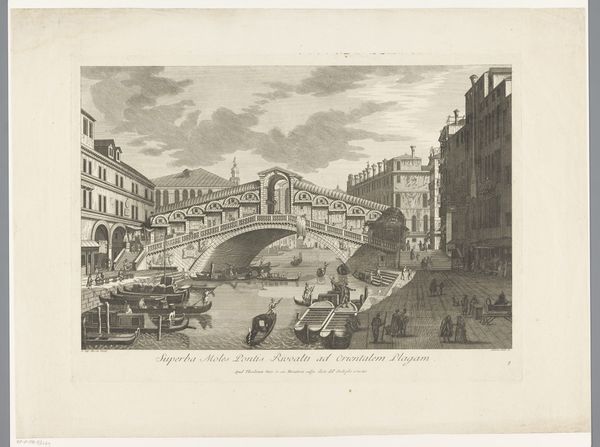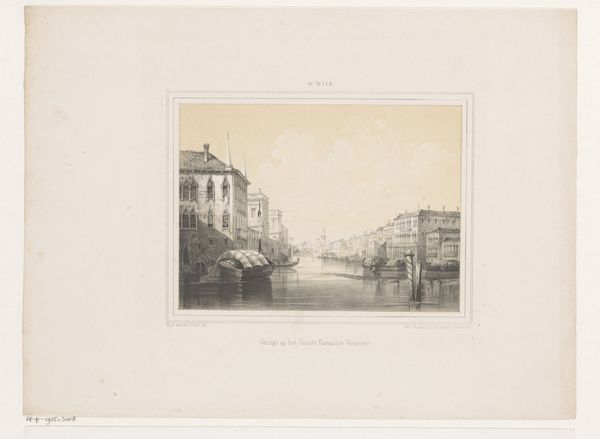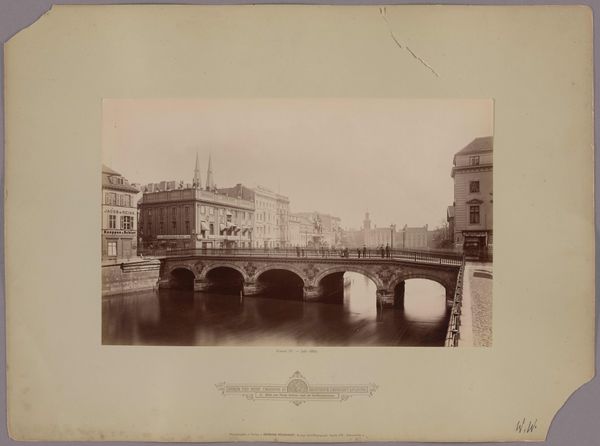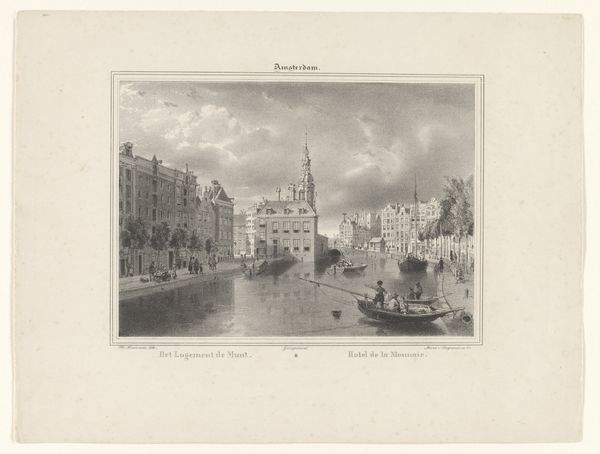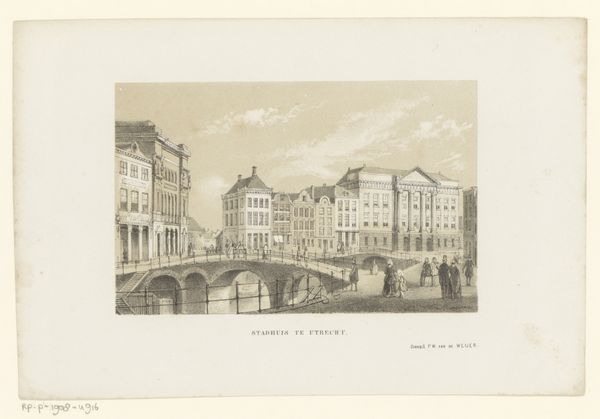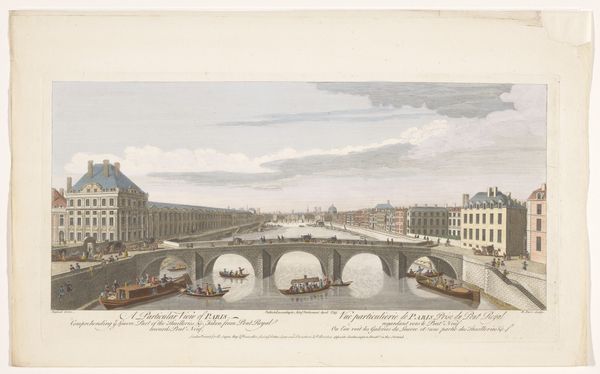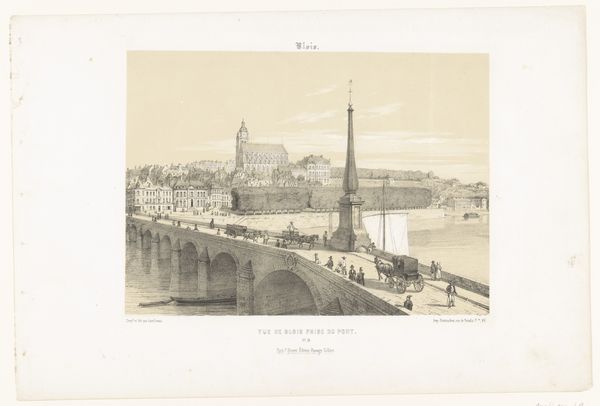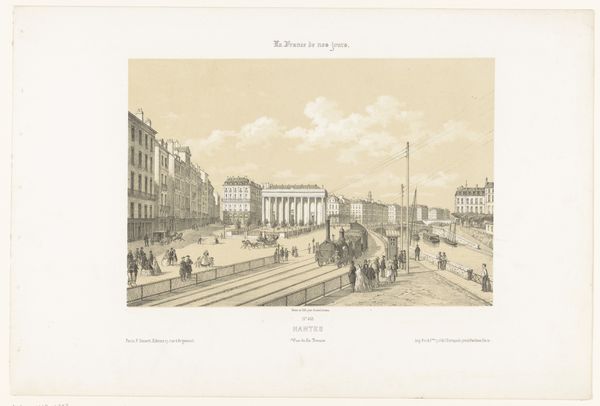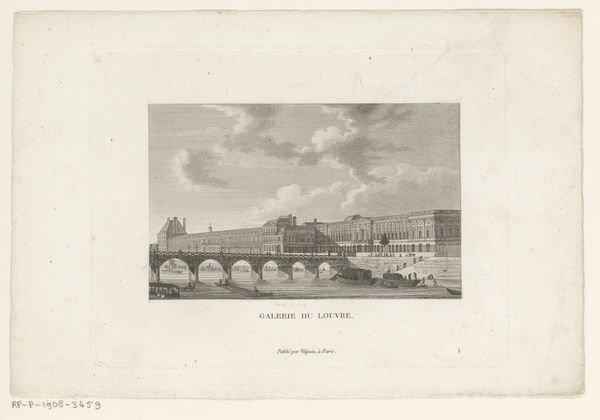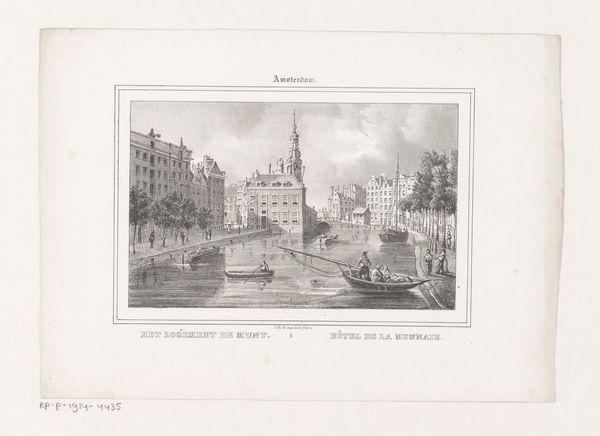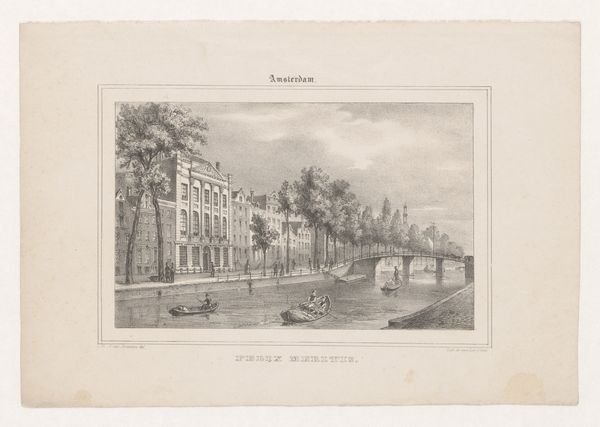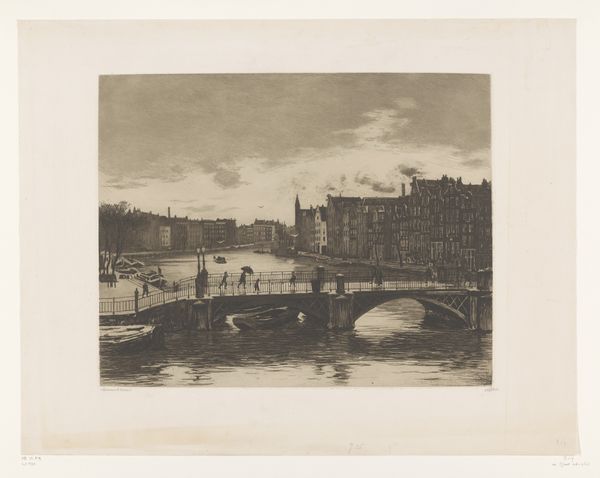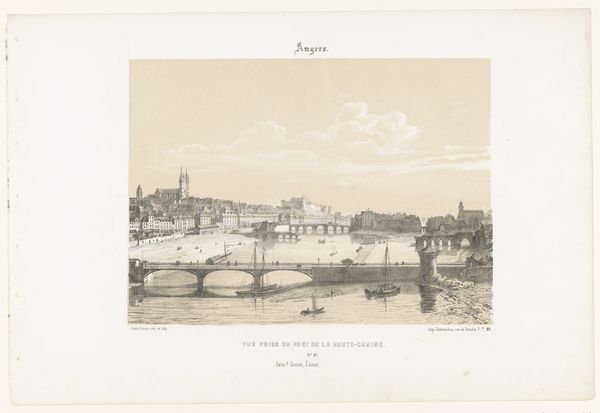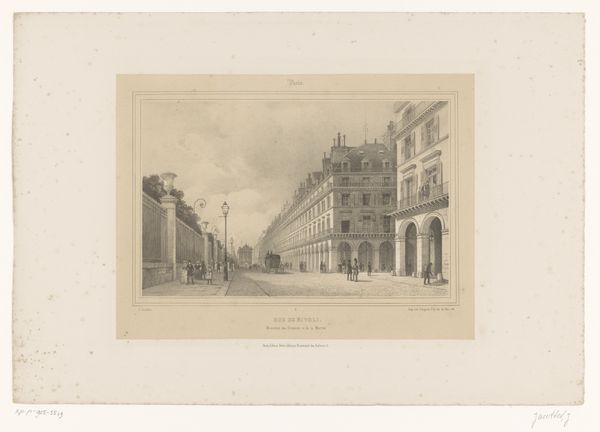
Zicht op de Pont de la Poissonnerie over de Loire in Nantes 1853 - 1856
0:00
0:00
Dimensions: height 291 mm, width 433 mm
Copyright: Rijks Museum: Open Domain
Editor: So this is "Zicht op de Pont de la Poissonnerie over de Loire in Nantes" by Léon Auguste Asselineau, created sometime between 1853 and 1856. It’s a print, an engraving, with incredibly fine detail showing a bustling cityscape. It feels…nostalgic. What can you tell me about it? Curator: I see here a beautiful example of the reproductive print industry flourishing in the mid-19th century. The sheer labor invested in producing such a detailed engraving speaks volumes about the perceived value of cityscapes for mass consumption. Look at the precise lines—consider the artisan’s skill involved in transferring Asselineau’s vision onto a metal plate. Editor: I hadn’t thought about the engraver's labor so directly. Curator: Precisely! Consider who this print was *for*. Was it intended for wealthy patrons who might have owned original artworks, or for a burgeoning middle class eager to participate in a visual culture previously out of reach? And what does that tell us about the power of art ownership? Editor: That makes sense. Was this a common form of art production at the time? Curator: Absolutely. The material conditions – the availability of engraving tools and skilled labor – made this kind of printmaking a dominant mode of disseminating images. Romanticized yet realistic, right? Where did this romantic view come from and for whom? It really pushes us to think about artistic representation not just as aesthetic expression, but as a product of social and economic forces. Editor: So, you're saying it's not just about the beautiful bridge, but also about the industry that created it and who consumed it? Curator: Exactly! And by focusing on the printmaking process and the intended audience, we gain a deeper understanding of 19th-century society and the democratization of art. It's amazing how a single print can tell us so much about the material world. Editor: I learned to appreciate it differently. Focusing on how it was made really does unlock a new layer of understanding. Thanks.
Comments
No comments
Be the first to comment and join the conversation on the ultimate creative platform.
